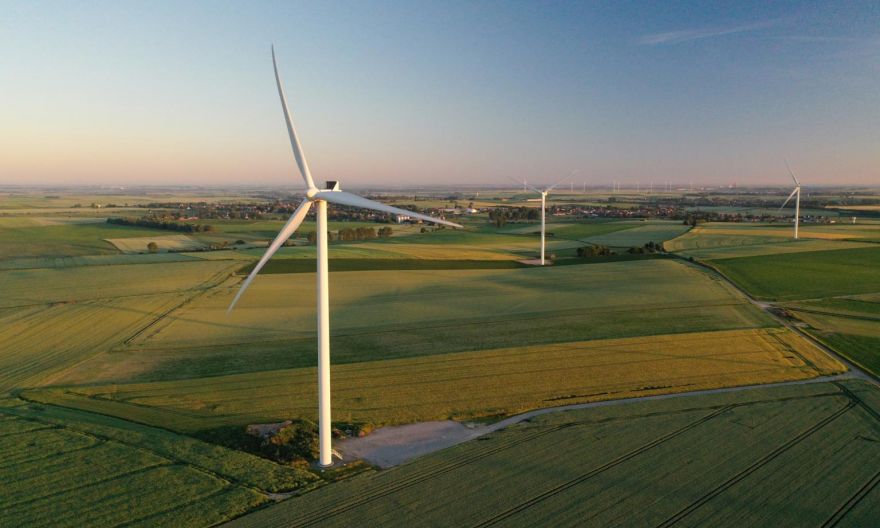Asset managers find greenwashing blind spots in EU rules

COPENHAGEN (BLOOMBERG) – As Europe rewrites the rules of investing to protect the planet from climate change, asset managers say they’re seeing differences in how those edicts are being interpreted.
Since March, money managers in Europe have had to adapt to the Sustainable Finance Disclosure Regulation (SFDR). Designed to fight greenwashing by forcing a uniform set of reporting standards, SFDR is more ambitious than anything agreed elsewhere in the world.
But a Bloomberg survey of some 20 major European banks and asset managers suggests the regulation leaves too much room for guess work. That means that despite vast piles of cash moving into environmental, social and governance (ESG) investing, efforts to steer capital away from carbon emitters may ultimately fall short.
Mr Baard Bringedal, chief investment officer at Storebrand Asset Management, says managers still have to deal with “many uncertainties and blind spots” when trying to allocate cash.
“As an anti-greenwashing regulation,” the SFDR was an important step, he said. “But it does not come without its limitations.”
It’s a sentiment that’s reverberating throughout the asset management industry. The lack of comparability even creates “legal uncertainty” for investment professionals, a spokesperson for CaixaBank SA said.
UBS Group AG, the world’s biggest wealth manager, told Bloomberg it’s seeing a “problematic” fragmentation in how environmental, social and corporate governance (ESG) rules are being read. National supervisors are coming up with “various interpretations and additional requirements” before there’s “any further clarification from the European Commission,” UBS said.
National regulators are raising their own concerns. Sweden’s Financial Supervisory Authority said in May the EU’s new climate rules would place an unreasonable burden on the watchdog. And there are also signs asset managers are overstating their commitment to ESG.
Overheating Planet That confusion risks slowing down efforts to fight global warming amid clear signs it’s already costing lives in the heart of Europe, with flash floods in western Germany and Belgium last month leaving the region in shock.
Meanwhile, asset managers can hardly keep up with the influx of cash chasing ethical causes. Bloomberg Intelligence estimates the market for ESG investing is set to exceed US$50 trillion – more than a third of the world’s total assets under management – by 2025.
“We recognize the rising climate urgency to act, and we see the clearly difficult situation on the regulatory side to keep up with the rising market momentum of climate impact investments,” Erste Group Bank AG said in its response to the survey.
“Yet, we believe that regulations should provide a clear basis for all market players and should be well prepared.”
Europe is well ahead of the U.S. and Asia in creating a regulatory framework to try to prevent greenwashing. In the two years through 2020, asset managers in the region were forced to admit that about US$2 trillion that had been classified as climate and social investing didn’t live up to the label. The question now is whether that figure might grow.
“Asset managers are taking a hard look at their fund offerings right now to determine which portfolios are looking suitable for ‘green’ investors,” said Mr Hortense Bioy, head of sustainability research at Morningstar Inc.
“There’s a lot at stake with SFDR.”
European asset managers are supposed to categorize investment products as light green (Article 8) and dark green (Article 9). Mr Bringedal said that “what defines an Article 8, and even Article 9 product, is still very much in the eye of the beholder. And we’ve seen quite a few diverging assessments of otherwise similar products and strategies.”
“At the moment, the labels and definitions applied to how managers categorize an Article 8 or 9 fund are not explained in any of the corporate filings.”
A study of ESG funds by Morningstar and Zeb Consulting commissioned by the Association of the Luxembourg Fund Industry found that the “various interpretations of the regulation have resulted in a diverse group of funds represented by Article 8 with entirely different ambition levels and heterogeneous investment strategies.”
The researchers also noted that a longer history of ESG investing gave some countries a leg up. The percentage of assets in sustainable funds differs “significantly,” with the Netherlands, Sweden, France and Switzerland handily beating the average, they said.
To provide more guidance, European authorities have proposed additional so-called technical standards. Those are expected to be adopted later this year, after financial market participants were asked for their input.
In the meantime, many asset managers are relying heavily on exchange-traded funds (ETFs) to fill their ESG mandates. But data compiled by Bloomberg Intelligence suggests that ESG ETFs don’t always integrate ESG to the extent that some investors might expect. A recent BI analysis found that, on a scale of zero to 10, the top-ranked ESG ETF scored 8.13, while the lowest got just 0.83.
